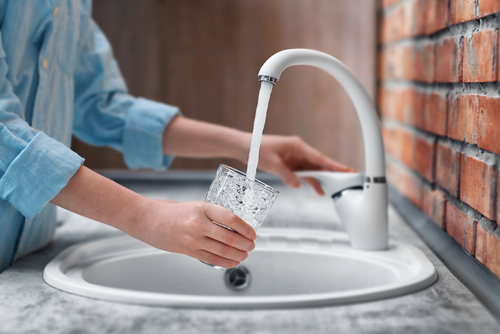The importance of water to human health cannot be overstated – our bodies are composed of approximately 60% water, the brain and heart are 73% water, the lungs are 83% water, the skin contains 64% water, muscles and kidneys are 79%, and the bones are 31% water. Almost every bodily process, from circulation to digestion and elimination, require water. We, as humans, cannot survive more than 3 days without water. Water is an essential part of human health.
According to the Environmental Working Group (EWG), there is more than 600 different types of contaminants in our drinking water. Contaminants cannot always be detected – meaning you may not see, taste, or smell the contaminants. For most of us, the most convenient and readily available source for drinking water comes from municipally treated tap water, which originates from underground aquifer or surface water, such as streams, rivers, and lakes. Heavily regulated by government standards, and Health Canada, our tap water is monitored for a mere 80 out of those 600 different types of contaminants.
You are probably thinking now: ‘the quantities of contaminants in my drinking water are so small, it won’t affect me’, or ‘my body will get used to the contaminants’. Some contaminants in our drinking water are often difficult to breakdown, are bio-accumulative, and absorbed by the body for years before we realize there may be an issue.
While it is beyond the scope of this blog format to cover all 80 of the monitored contaminants, I will cover some of the different types and provide a few examples.
It is important to note that the subject of water contamination is complex, with multiple variations, most of which are well documented. Basically, there are three ways water can get contaminated: natural, accidental, and intentional. Anything that is not water, that is 2 molecules of hydrogen and 1 molecule of oxygen, is a contaminant. Not all intentional contamination is harmful, not all natural contamination is beneficial, and not all accidental contamination is reported.
What’s That In My Drinking Water?
INORGANIC MINERALS are a group of contaminants that include minerals and toxic metals. Lead is one such toxic metal, that enters our drinking water from service pipes. The set maximum contaminant level for lead is zero. Exposure to lead is linked to increase blood pressure, hypertension, decreased kidney function, and reproductive problems. Other types of inorganic contaminants are calcium and magnesium, which are naturally occurring. Other inorganic minerals such as copper and arsenic can also get into our drinking water from service pipes.
ORGANIC CONTAMINANTS can somewhat be misleading, in that organic refers to carbon-based, and would usually mean from petroleum. Methyl tert-butyl ether (MTBE) is a chemical added to gasoline that raise the octane levels. Yes, you read that correctly, there is gasoline in our drinking water. Gasoline spills, either on our roadways and on our waterways, gets washed from our roads with the next rainstorm, and with the increased used of motorized boating, do end up in our drinking water. Another example of organic contaminants are Polychlorinated biphenyls (PCB) from spills, and leaks from electrical equipment. MTBE and PCB have been linked to cancer.
PHARMACEUTICALS such as prescription medication and antibiotic for livestock pass through our bodies and end up in our water supply. Did you known that 90% of oral prescription drugs gets excreted from our bodies? Expired and unneeded drugs, is another problem, especially when they end up getting flushed down the toilets.
BIOLOGICAL CONTAMINANTS are the one most people can related to. One just needs to remember Walkerton, Ontario or more recently Flint, Michigan to remember that effective municipal water treatment that is properly monitored and operated would normally take care of this type of contaminant.
WATER TREATMENT CONTAMINANTS include the use of methods, including the addition of chemicals, such as chlorine, ammonia, and fluoride to remove disease causing agents. Chlorine, while it does protect our drinking water from germs, while it is piped from the treatment plant to our homes, has been associated with cancer, according to the Medical College of Wisconsin. Fluoride, while it protects our teeth from cavities, is also well know cancer causing.
We have been endowed with a great abundance of water, and it is each one of us to be mindful and ever vigilant about how we use water. How we treat our waterways and how our daily choices affect our drinking water either directly or indirectly. Our lives have become so accustomed to the convenience of water, that some of us can’t connect our drinking water with the current conditions of our streams, rivers, and lakes. Our drinking water has become highly processed by way too many intermediary or intercessor. We don’t know what it would be like to get our drinking water directly from the source, untouched, unprocessed, wild water.


